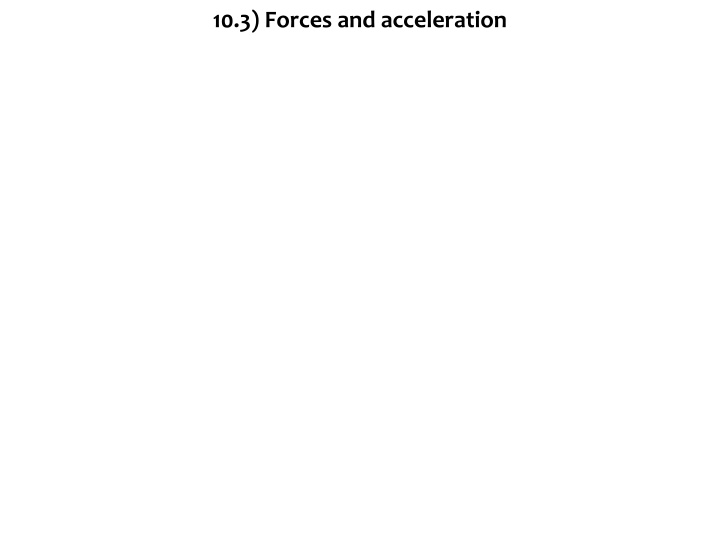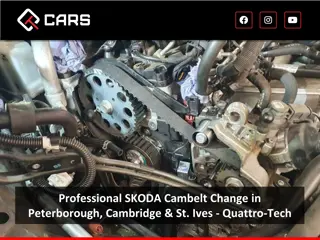
Forces and Acceleration Concepts
Explore various examples involving forces, acceleration, and gravitational interactions, from determining acceleration of objects to calculating tension in cables for lifting operations. Enhance your knowledge of physics principles through practical scenarios and calculations.
Download Presentation

Please find below an Image/Link to download the presentation.
The content on the website is provided AS IS for your information and personal use only. It may not be sold, licensed, or shared on other websites without obtaining consent from the author. If you encounter any issues during the download, it is possible that the publisher has removed the file from their server.
You are allowed to download the files provided on this website for personal or commercial use, subject to the condition that they are used lawfully. All files are the property of their respective owners.
The content on the website is provided AS IS for your information and personal use only. It may not be sold, licensed, or shared on other websites without obtaining consent from the author.
E N D
Presentation Transcript
Your turn Worked example A car of 2000kg has a driving force of 800N and forces of 200N resisting its motion. Determine its acceleration. 0.3 ?? 2 A car of 1000kg has a driving force of 1600N and forces of 400N resisting its motion. Determine its acceleration.
Your turn Worked example An object of mass 70kg experiences air resistance of 300 N. Determine the object s acceleration as it falls towards the ground. 5.51 ?? 2 (3 sf) An object of mass 140kg experiences air resistance of 600 N. Determine the object s acceleration as it falls towards the ground.
Your turn Worked example A child has a mass of 50kg. What is the gravitational force (weight) acting on the child? An adult has a mass of 100kg. What is the gravitational force (weight) acting on the adult? 490 ?
Your turn Worked example A body of mass 5kg is pulled along a rough horizontal table by a horizontal force of magnitude 20N against a constant friction force of magnitude 4N. Given that the body is initially at rest, find: (a) the acceleration of the body (b) the distance travelled by the body in the first 4 seconds (c) the magnitude of the normal reaction between the body and the table a) 3.2 ?? 2 b) 25.6 ? c) 49 ? A body of mass 10kg is pulled along a rough horizontal table by a horizontal force of magnitude 40N against a constant friction force of magnitude 8N. Given that the body is initially at rest, find: (a) the acceleration of the body (b) the distance travelled by the body in the first 2 seconds (c) the magnitude of the normal reaction between the body and the table
Your turn Worked example An objects of mass 4 ?? hits soft ground at a speed of 28 ?? 1 and sinks vertically downwards before coming to rest. The ground is assumed to exert a constant resistive force of magnitude 5000 ?. Find the vertical distance that the object sinks into the ground before coming to rest. 0.32 ? (2 sf) An objects of mass 8 ?? hits soft ground at a speed of 14 ?? 1 and sinks vertically downwards before coming to rest. The ground is assumed to exert a constant resistive force of magnitude 5000 ?. Find the vertical distance that the object sinks into the ground before coming to rest.
Your turn Worked example A lift of mass 400 ?? is lowered or raised by a metal cable attached to its top. The lift contains passengers whose total mass is 200 ??. The lift starts from rest and accelerates at a constant rate, reaching a speed of 4 ?? 1 after moving a distance of 5 ?. Find: a) The acceleration of the lift b) The tension in the cable if the lift is moving vertically downwards c) The tension in the cable if the lift is moving vertically upwards a) 1.6 ?? 2 b) 4920 ? c) 6840 ? A lift of mass 500 ?? is lowered or raised by a metal cable attached to its top. The lift contains passengers whose total mass is 100 ??. The lift starts from rest and accelerates at a constant rate, reaching a speed of 5 ?? 1 after moving a distance of 4 ?. Find: a) The acceleration of the lift b) The tension in the cable if the lift is moving vertically downwards c) The tension in the cable if the lift is moving vertically upwards








